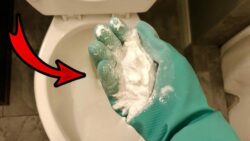In the video “How to Drain & Flush a Hot Water Tank” by AMRE Supply, you will learn how to remove sediment from your hot water tank and perform a deep flush to maintain its efficiency. The accumulation of sediment in the tank can act as an insulator and reduce the water heater’s effectiveness.
The video provides detailed instructions on how to drain the tank, flush out the sediment, and refill it properly. It also covers troubleshooting tips in case the tank isn’t draining properly. Regular maintenance of your hot water tank is essential to ensure its optimal performance and prevent potential issues in the future. AMRE Supply, a trusted provider of appliance parts, heating, plumbing, lighting, and janitorial supplies, offers expert help online, over the phone, or in person at their multiple locations across Canada.
How to Drain & Flush a Hot Water Tank

In this article, you will learn how to properly drain and flush a hot water tank. Regular maintenance of your hot water tank is crucial to remove sediment buildup, which can decrease the efficiency of the water heater. By following these step-by-step instructions, you can ensure that your hot water tank remains in optimum condition.
What You’ll Need
Before you start draining and flushing your hot water tank, gather the following tools and materials:
- Screwdriver: You will need a screwdriver to disconnect certain components of the water heater.
- Garden hose: A garden hose will be used to drain the water from the tank.
- Washing machine hose: This hose will be useful for backflushing if necessary.
Disconnecting the Water Heater
Before you can begin the draining process, you need to disconnect the water heater from its power source. Follow these steps:
- Shut off power for electric water heaters: Locate the breaker dedicated to the water heater and switch it off to cut off the power supply.
- Turn off the gas supply for gas water heaters: Locate the gas supply valve and turn it off. This valve is typically situated on the gas line leading to the water heater.
- Set water heater to pilot setting: If your water heater has a pilot setting, switch it to this mode to prevent the burner from igniting while you work.
- Turn off gas control: Locate the gas control valve on the water heater and turn it off. This will ensure that no gas is flowing to the burner.
Water Not Draining?
If you encounter difficulties with water not draining properly from the tank, follow these steps:
- Open a hot water faucet in the house: By opening a hot water faucet, you allow air into the system, which helps with the draining process.
- Connect garden hose to drain valve: Attach one end of the garden hose to the drain valve on the water heater.
- Drain water: Open the drain valve to allow water to flow out through the garden hose. Be aware that this process may take some time, possibly 30 minutes or more.
- Backflush if necessary: If the water is draining slowly or not at all, there may be sediment clogging the valve. In this case, you can perform a backflush. Connect a washing machine hose to a threaded faucet and then attach it to the garden hose. Open the faucet for several seconds to blast water back into the tank. This should dislodge any sediment. Disconnect the washing machine hose and continue draining the tank. You may need to repeat this process multiple times until the water runs clear.
Flushing the Tank
Once the water has been drained from the tank, you can proceed with flushing it. Follow these steps:
- Turn on the cold supply to blast water into the bottom of the tank: Open the cold water supply and let it flow into the tank for about 20 seconds. This will agitate and lift the sediment from the bottom of the tank.
- Drain the water: Open the drain valve once again to allow the water, along with the loosened sediment, to flow out. Repeat this process several times if necessary until the water draining from the hose appears clear.
Refilling the Tank
After flushing the tank, it’s time to refill it. Follow these steps:
- Open a hot water faucet in the house: Open a hot water faucet to allow the air in the system to escape as you refill the tank.
- Open the cold water supply to fill the tank: Slowly open the cold water supply valve to begin filling the tank. Listen for any air being pushed out of the system.
- Close the faucet once a smooth stream of water is achieved: When you hear the water flowing smoothly without any air pockets, close the faucet. This indicates that the tank is full, and all air has been removed.
Conclusion
By properly draining and flushing your hot water tank, you can remove sediment buildup and increase its efficiency. Regular maintenance is crucial to prevent sediment from accumulating on the bottom of the tank, which can act as an insulator and reduce the heater’s performance. Follow the outlined steps in this article to ensure that your hot water tank remains in optimal condition.





